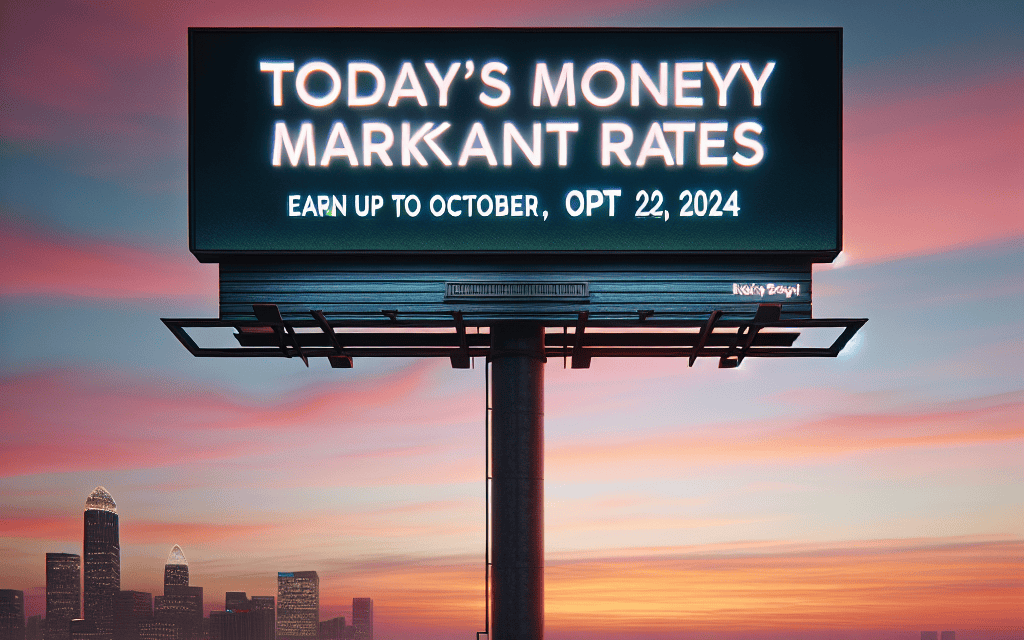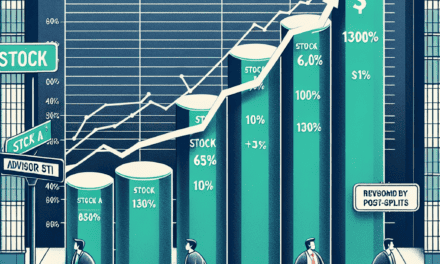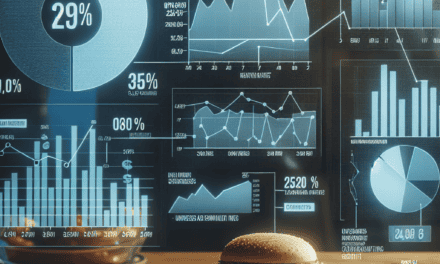“Maximize Your Savings: Secure Up to 5.05% APY with Today’s Money Market Rates!”
Introduction
As of October 22, 2024, money market accounts are offering competitive interest rates, with some institutions providing up to 5.05% annual percentage yield (APY). These accounts, known for their blend of savings and checking account features, are attracting attention from savers looking to maximize their returns while maintaining liquidity. The current economic climate, characterized by fluctuating interest rates and market conditions, has prompted financial institutions to adjust their offerings, making money market accounts an attractive option for those seeking both security and higher yields. This trend reflects a broader shift in consumer preferences towards more flexible and rewarding savings solutions.
Understanding Money Market Accounts: A Guide to Today’s Rates
In the ever-evolving landscape of personal finance, money market accounts (MMAs) have emerged as a popular choice for individuals seeking a balance between liquidity and higher interest rates. As of October 22, 2024, these accounts offer competitive annual percentage yields (APYs), with some institutions providing rates as high as 5.05%. Understanding the nuances of money market accounts and the factors influencing today’s rates is crucial for making informed financial decisions.
Money market accounts are a type of savings account that typically offer higher interest rates compared to traditional savings accounts. They achieve this by investing in short-term, low-risk securities such as Treasury bills and commercial paper. This investment strategy allows banks and credit unions to pass on higher returns to account holders. However, it is important to note that MMAs often require higher minimum balances and may impose restrictions on the number of transactions allowed per month.
The current landscape of money market account rates is shaped by several key factors. Primarily, the Federal Reserve’s monetary policy plays a significant role. In recent years, the Federal Reserve has adjusted interest rates in response to economic conditions, influencing the rates offered by financial institutions. As the Federal Reserve raises its benchmark interest rate to combat inflation, banks and credit unions often follow suit by increasing the rates on their deposit accounts, including MMAs. Consequently, the current environment of elevated interest rates has contributed to the attractive yields available today.
Moreover, competition among financial institutions also impacts money market account rates. In a bid to attract more customers, banks and credit unions may offer promotional rates or enhanced features for their MMAs. This competitive dynamic encourages institutions to provide more appealing terms, benefiting consumers who are diligent in comparing options. As a result, individuals can find accounts with rates that significantly outpace the national average, such as those offering up to 5.05% APY.
While the allure of high interest rates is undeniable, potential account holders should consider other factors when evaluating money market accounts. For instance, the minimum balance requirement is a critical consideration, as failing to maintain the required balance can result in fees or reduced interest rates. Additionally, understanding the withdrawal limitations is essential, as exceeding the allowed number of transactions can incur penalties. Therefore, it is advisable to carefully review the terms and conditions of each account to ensure it aligns with one’s financial goals and usage patterns.
Furthermore, the safety of deposits is a paramount concern for many individuals. Money market accounts offered by banks and credit unions are typically insured by the Federal Deposit Insurance Corporation (FDIC) or the National Credit Union Administration (NCUA), respectively. This insurance provides peace of mind by protecting deposits up to the insured limit, which is generally $250,000 per depositor, per institution. Thus, account holders can confidently pursue higher yields without compromising the security of their funds.
In conclusion, money market accounts present a compelling option for those seeking to maximize their savings with competitive interest rates. The current economic climate, characterized by elevated interest rates and robust competition among financial institutions, has created an environment where individuals can earn up to 5.05% APY. By carefully considering factors such as minimum balance requirements, transaction limitations, and deposit insurance, individuals can make informed decisions that align with their financial objectives. As the financial landscape continues to evolve, staying informed about money market account rates and terms will empower individuals to optimize their savings strategies effectively.
Comparing Money Market Account Rates: How to Earn Up to 5.05% APY
In the ever-evolving landscape of personal finance, money market accounts (MMAs) have emerged as a popular choice for individuals seeking a balance between liquidity and higher interest rates. As of October 22, 2024, these accounts offer competitive annual percentage yields (APYs), with some institutions providing rates as high as 5.05%. Understanding how to navigate these options can significantly impact your financial strategy, especially in a climate where maximizing returns on savings is crucial.
To begin with, money market accounts are a type of savings account that typically offer higher interest rates compared to traditional savings accounts. They achieve this by investing in short-term, low-risk securities, which allows banks and credit unions to pass on higher yields to account holders. However, it is important to note that these accounts often come with certain restrictions, such as minimum balance requirements and limited transaction capabilities. Therefore, when considering an MMA, it is essential to weigh these factors against the potential benefits.
In today’s market, the allure of a 5.05% APY is undeniable, especially when juxtaposed with the lower rates offered by standard savings accounts. To capitalize on these higher rates, consumers must first conduct thorough research to identify financial institutions that offer competitive terms. Online banks and credit unions often provide more attractive rates than their brick-and-mortar counterparts due to lower overhead costs. Consequently, exploring these options can be a prudent step for those looking to maximize their earnings.
Moreover, it is crucial to understand the conditions attached to these high-yield accounts. Many institutions require a substantial initial deposit or mandate that a certain balance be maintained to qualify for the advertised APY. Failing to meet these requirements can result in a significantly lower interest rate or even incur fees, which could negate the benefits of the higher yield. Therefore, potential account holders should carefully review the terms and conditions to ensure they can meet the necessary criteria.
In addition to the financial requirements, it is also beneficial to consider the accessibility and convenience of the account. While online banks may offer higher rates, they may lack the physical presence and personalized service that some consumers prefer. Balancing the need for a competitive APY with the desire for convenient access to funds is a personal decision that should align with one’s overall financial goals.
Furthermore, it is advisable to remain vigilant about market trends and economic indicators that could influence interest rates. The Federal Reserve’s monetary policy, inflation rates, and overall economic conditions can all impact the rates offered by financial institutions. Staying informed about these factors can help account holders make timely decisions about when to open or adjust their money market accounts.
In conclusion, while the prospect of earning up to 5.05% APY on a money market account is enticing, it requires careful consideration and strategic planning. By thoroughly researching available options, understanding the associated terms, and staying informed about economic trends, individuals can effectively leverage these accounts to enhance their financial portfolio. As with any financial decision, the key lies in aligning the choice with one’s personal financial objectives and risk tolerance, ensuring that the benefits of a high-yield money market account are fully realized.
The Benefits of High-Yield Money Market Accounts in 2024
In the ever-evolving landscape of personal finance, high-yield money market accounts have emerged as a compelling option for individuals seeking to maximize their savings. As of October 22, 2024, these accounts offer attractive annual percentage yields (APY), with some reaching up to 5.05%. This development presents a significant opportunity for savers to enhance their financial portfolios while maintaining a level of liquidity and security that other investment vehicles may not provide. Understanding the benefits of high-yield money market accounts in 2024 is crucial for anyone looking to make informed decisions about their financial future.
To begin with, high-yield money market accounts offer a unique combination of features that make them particularly appealing in today’s economic climate. Unlike traditional savings accounts, which often provide minimal interest rates, money market accounts typically offer higher yields. This is primarily due to the way financial institutions invest the funds deposited in these accounts, often in short-term, low-risk securities. Consequently, account holders can enjoy the benefits of higher interest earnings without exposing themselves to the volatility associated with other investment options, such as stocks or mutual funds.
Moreover, the current economic environment has contributed to the attractiveness of these accounts. With interest rates on the rise, financial institutions are competing to offer more competitive rates to attract depositors. This competition has resulted in money market accounts offering yields that are significantly higher than those seen in recent years. For savers, this means that their money can grow at a faster pace, helping them to achieve their financial goals more efficiently. Whether saving for a major purchase, building an emergency fund, or planning for retirement, the enhanced earning potential of high-yield money market accounts can play a pivotal role in financial planning.
In addition to their competitive interest rates, money market accounts provide a level of flexibility that is often lacking in other savings vehicles. Account holders typically have the ability to write checks, make electronic transfers, and access their funds with ease. This liquidity is particularly advantageous for individuals who may need to access their savings on short notice, without incurring penalties or fees. Furthermore, money market accounts are generally insured by the Federal Deposit Insurance Corporation (FDIC) up to the standard limit, offering peace of mind that their funds are protected.
Another noteworthy benefit of high-yield money market accounts is their role in diversifying an individual’s financial portfolio. By allocating a portion of their savings to these accounts, individuals can balance the risk and return of their overall investment strategy. This diversification is especially important in times of economic uncertainty, as it can help mitigate potential losses in other areas of one’s portfolio. Additionally, the stability and predictability of returns from money market accounts can provide a solid foundation upon which to build a more comprehensive financial plan.
In conclusion, high-yield money market accounts in 2024 offer a compelling combination of competitive interest rates, liquidity, and security. As financial institutions continue to vie for depositors’ attention, the potential for earning up to 5.05% APY presents a valuable opportunity for savers. By understanding the benefits and strategic advantages of these accounts, individuals can make informed decisions that align with their financial objectives. As such, high-yield money market accounts remain a prudent choice for those seeking to optimize their savings in today’s dynamic economic environment.
How to Choose the Best Money Market Account for Your Savings

In the ever-evolving landscape of personal finance, selecting the right money market account (MMA) is crucial for maximizing your savings. As of October 22, 2024, money market account rates have reached impressive heights, with some institutions offering up to 5.05% annual percentage yield (APY). This presents a compelling opportunity for savers to grow their funds more effectively. However, choosing the best account requires careful consideration of several factors beyond just the interest rate.
To begin with, it is essential to understand what a money market account is and how it differs from other savings vehicles. MMAs are a type of deposit account offered by banks and credit unions that typically provide higher interest rates than traditional savings accounts. They achieve this by investing in short-term, low-risk securities. While they offer the advantage of higher returns, they also come with certain restrictions, such as limited transactions per month. Therefore, when selecting an MMA, it is important to assess your liquidity needs and ensure that the account’s terms align with your financial goals.
Interest rates are undoubtedly a significant factor when choosing a money market account. With rates as high as 5.05% APY available, it is tempting to select an account based solely on this criterion. However, it is prudent to consider the stability and reputation of the financial institution offering these rates. Established banks and credit unions with a strong track record of customer satisfaction and financial stability are generally safer choices. Additionally, it is wise to verify whether the advertised rate is a promotional offer or a standard rate, as promotional rates may revert to lower levels after a specified period.
Another critical aspect to consider is the minimum balance requirement. Many MMAs require a minimum deposit to open the account and maintain the advertised APY. These requirements can vary significantly between institutions, ranging from a few hundred to several thousand dollars. It is important to choose an account with a minimum balance requirement that you can comfortably meet without straining your finances. Failing to maintain the required balance could result in lower interest rates or additional fees, which would diminish the benefits of the higher APY.
Furthermore, fees associated with money market accounts can impact your overall returns. Common fees include monthly maintenance fees, excessive transaction fees, and penalties for falling below the minimum balance. When comparing accounts, it is crucial to read the fine print and understand the fee structure. Opting for an account with low or no fees can significantly enhance your net earnings over time.
In addition to these considerations, accessibility and convenience should not be overlooked. Many financial institutions offer online and mobile banking services, which can make managing your account more convenient. Features such as mobile check deposit, easy fund transfers, and ATM access can enhance your banking experience and provide greater flexibility in managing your savings.
In conclusion, while today’s money market account rates present an attractive opportunity for savers, selecting the best account requires a comprehensive evaluation of various factors. By considering the interest rate, financial institution reputation, minimum balance requirements, fees, and accessibility, you can make an informed decision that aligns with your financial objectives. As you navigate the options available, remember that the right money market account can serve as a powerful tool in achieving your savings goals.
Maximizing Your Savings: Money Market Accounts vs. Other Options
In the ever-evolving landscape of personal finance, individuals are constantly seeking ways to maximize their savings while ensuring liquidity and security. As of October 22, 2024, money market accounts (MMAs) have emerged as a compelling option, offering attractive annual percentage yields (APYs) of up to 5.05%. This development prompts a closer examination of how MMAs compare to other savings vehicles, such as traditional savings accounts, certificates of deposit (CDs), and high-yield savings accounts.
To begin with, money market accounts are a type of deposit account offered by banks and credit unions that typically provide higher interest rates than standard savings accounts. The appeal of MMAs lies in their ability to offer competitive returns while maintaining a level of liquidity that is not typically available with CDs. Unlike CDs, which require funds to be locked in for a predetermined period, MMAs allow account holders to access their money with relative ease, often providing check-writing privileges and debit card access. This flexibility makes MMAs an attractive option for those who wish to earn higher interest without sacrificing access to their funds.
In comparison, traditional savings accounts, while offering liquidity, generally provide lower interest rates. As of the current market conditions, the average savings account interest rate hovers around 0.30% APY, significantly lower than the rates offered by MMAs. This discrepancy highlights the advantage of MMAs for individuals seeking to grow their savings more effectively. However, it is important to note that MMAs may require a higher minimum balance to open and maintain the account, which could be a consideration for some savers.
On the other hand, certificates of deposit offer fixed interest rates that are often higher than those of both traditional savings accounts and MMAs. CDs are ideal for individuals who can afford to set aside their funds for a specific term, ranging from a few months to several years. The trade-off, however, is the lack of liquidity, as early withdrawal from a CD typically incurs penalties. Therefore, while CDs can be a valuable tool for long-term savings goals, they may not be suitable for those who anticipate needing access to their funds in the short term.
High-yield savings accounts present another alternative, often offering interest rates that rival or exceed those of MMAs. These accounts are typically available through online banks, which can afford to offer higher rates due to lower overhead costs. While high-yield savings accounts provide a similar level of liquidity to MMAs, they may lack some of the additional features, such as check-writing capabilities, that MMAs offer. Additionally, the interest rates on high-yield savings accounts can fluctuate more frequently in response to changes in the federal funds rate, whereas MMAs may offer more stable returns.
In conclusion, the decision to choose a money market account over other savings options depends on individual financial goals and circumstances. For those seeking a balance between competitive interest rates and liquidity, MMAs present a viable option, especially in the current economic climate where they offer up to 5.05% APY. However, it is crucial for savers to carefully evaluate their needs, considering factors such as minimum balance requirements, access to funds, and the potential for interest rate fluctuations. By doing so, individuals can make informed decisions that align with their financial objectives, ultimately maximizing their savings potential.
The Impact of Interest Rate Changes on Money Market Accounts
In the ever-evolving landscape of personal finance, money market accounts (MMAs) have long been a favored choice for individuals seeking a balance between liquidity and higher interest rates. As of October 22, 2024, these accounts are offering attractive annual percentage yields (APYs) of up to 5.05%, a significant increase compared to previous years. This rise in rates can be attributed to a variety of factors, primarily driven by changes in the broader economic environment and monetary policy adjustments. Understanding the impact of these interest rate changes on money market accounts is crucial for both current and prospective account holders.
To begin with, it is essential to recognize that money market accounts are interest-bearing deposit accounts that typically offer higher interest rates than traditional savings accounts. They achieve this by investing in short-term, low-risk securities. The interest rates on MMAs are closely tied to the federal funds rate, which is the interest rate at which banks lend to each other overnight. When the Federal Reserve adjusts this rate, it directly influences the interest rates offered by financial institutions on various deposit accounts, including money market accounts.
In recent years, the Federal Reserve has implemented a series of interest rate hikes in response to inflationary pressures and a robust economic recovery. These rate increases have been instrumental in driving up the yields on money market accounts. As banks and credit unions compete to attract deposits, they have raised the interest rates on their MMAs to remain competitive. Consequently, account holders have benefited from these higher rates, enjoying more substantial returns on their deposits.
Moreover, the current economic climate has played a pivotal role in shaping the interest rate landscape. With inflation rates remaining elevated, the Federal Reserve has maintained a hawkish stance, signaling its commitment to curbing inflation through monetary tightening. This approach has further contributed to the upward trajectory of interest rates on money market accounts. As a result, individuals seeking a safe haven for their savings have increasingly turned to MMAs, drawn by the promise of higher returns without sacrificing liquidity.
However, it is important to note that while higher interest rates on money market accounts are advantageous for savers, they also come with certain considerations. For instance, the increased yields may be accompanied by higher minimum balance requirements or fees, which can impact the overall attractiveness of these accounts. Therefore, it is imperative for individuals to carefully evaluate the terms and conditions of different MMAs to ensure they align with their financial goals and circumstances.
Furthermore, the dynamic nature of interest rates means that the current high yields on money market accounts may not be permanent. As economic conditions evolve and the Federal Reserve adjusts its monetary policy, the rates on these accounts may fluctuate. Consequently, account holders should remain vigilant and stay informed about potential changes in interest rates to make informed decisions about their savings strategies.
In conclusion, the current landscape of money market account rates, with yields reaching up to 5.05% APY, presents a compelling opportunity for savers. The interplay between Federal Reserve policies, economic conditions, and competitive pressures has driven these rates upward, offering individuals a chance to earn more on their deposits. However, as with any financial product, it is crucial to consider the associated terms and remain adaptable to future changes in the interest rate environment. By doing so, individuals can effectively navigate the complexities of money market accounts and optimize their savings potential.
Tips for Finding the Best Money Market Account Rates in October 2024
In the ever-evolving landscape of personal finance, finding the best money market account rates can be a crucial step toward maximizing your savings. As of October 2024, some financial institutions are offering attractive annual percentage yields (APYs) of up to 5.05%. This presents a compelling opportunity for savers looking to grow their funds with minimal risk. However, navigating the myriad of options available requires a strategic approach. By understanding the key factors that influence money market account rates and employing a few savvy strategies, you can make informed decisions that align with your financial goals.
To begin with, it is essential to understand what a money market account is and how it differs from other savings vehicles. Money market accounts are a type of savings account that typically offer higher interest rates than traditional savings accounts. They achieve this by investing in short-term, low-risk securities. While they often require a higher minimum balance, the trade-off is the potential for greater returns. In today’s market, where some accounts offer up to 5.05% APY, the appeal of money market accounts is evident. However, not all accounts are created equal, and rates can vary significantly between institutions.
One of the first steps in finding the best money market account rates is to conduct thorough research. This involves comparing rates from various banks and credit unions, both online and brick-and-mortar. Online banks often offer higher rates due to lower overhead costs, making them a viable option for tech-savvy consumers. Additionally, credit unions, which are member-owned, may provide competitive rates and personalized service. By exploring a diverse range of financial institutions, you can identify those offering the most favorable terms.
Moreover, it is important to consider the account’s terms and conditions beyond just the interest rate. Factors such as minimum balance requirements, fees, and withdrawal limitations can significantly impact the overall value of the account. For instance, an account with a high APY but steep fees may not be as beneficial as one with a slightly lower rate but fewer charges. Therefore, evaluating the full spectrum of account features is crucial in determining the best option for your needs.
Another effective strategy is to leverage promotional offers. Many banks and credit unions provide introductory rates or bonuses to attract new customers. These promotions can temporarily boost your earnings, but it is vital to understand the terms and how they change after the promotional period ends. By taking advantage of these offers, you can enhance your returns, provided you remain vigilant about any subsequent rate adjustments.
Furthermore, staying informed about economic trends and monetary policy can provide valuable insights into future rate movements. Interest rates are influenced by factors such as inflation, Federal Reserve policies, and overall economic conditions. By keeping abreast of these developments, you can anticipate potential changes in money market account rates and adjust your strategy accordingly.
In conclusion, finding the best money market account rates in October 2024 requires a combination of diligent research, careful evaluation of account features, and strategic use of promotional offers. By understanding the broader economic context and remaining flexible in your approach, you can optimize your savings and take advantage of the favorable rates currently available. As you navigate this process, remember that the ultimate goal is to align your choice with your financial objectives, ensuring that your money works as effectively as possible for you.
Q&A
1. **What is the highest APY available for money market accounts as of October 22, 2024?**
– The highest APY available is 5.05%.
2. **Which financial institutions are offering competitive money market account rates?**
– Various online banks and credit unions are typically offering competitive rates, but specific names would need to be checked for the most current offerings.
3. **What factors should be considered when choosing a money market account?**
– Consider the APY, minimum balance requirements, fees, withdrawal limits, and the institution’s reputation.
4. **How does the current APY compare to historical rates?**
– The current APY of 5.05% is relatively high compared to historical averages, which have been lower in recent years.
5. **Are there any fees associated with money market accounts?**
– Some accounts may have monthly maintenance fees, but many institutions offer fee waivers if certain conditions are met.
6. **What is the typical minimum balance requirement for earning the highest APY?**
– Minimum balance requirements can vary, but they often range from $1,000 to $10,000 for the highest APY.
7. **How often do money market account rates change?**
– Rates can change frequently, often in response to changes in the Federal Reserve’s interest rates and market conditions.
Conclusion
As of October 22, 2024, money market account rates have reached competitive levels, with some institutions offering up to 5.05% APY. This reflects a favorable environment for savers seeking to maximize their returns on liquid assets. The elevated rates are likely influenced by broader economic conditions, including central bank policies and inflationary pressures. Savers should consider these high-yield options as part of their overall financial strategy, balancing the benefits of higher returns with the need for liquidity and safety.





